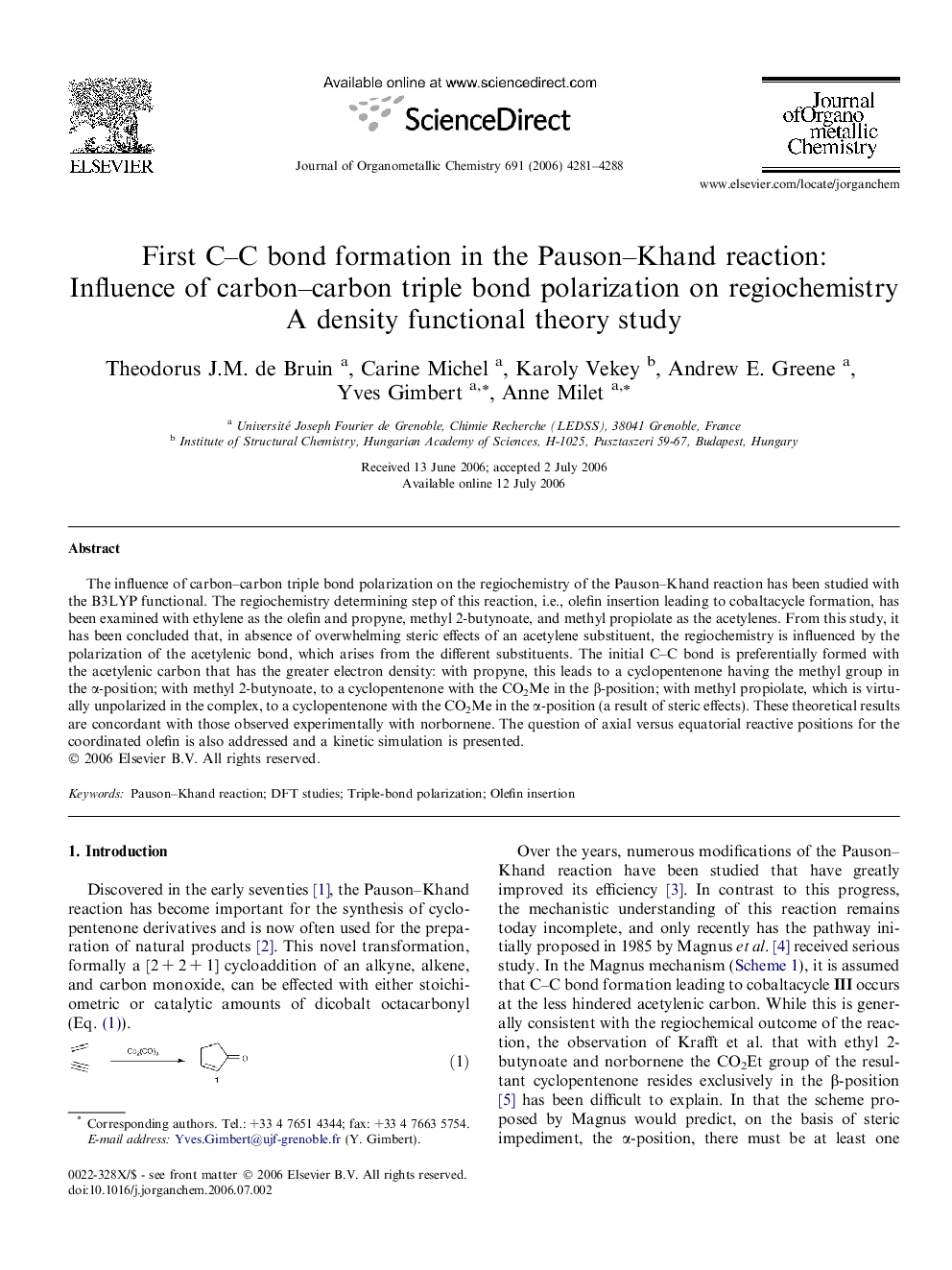| کد مقاله | کد نشریه | سال انتشار | مقاله انگلیسی | نسخه تمام متن |
|---|---|---|---|---|
| 1328487 | 977579 | 2006 | 8 صفحه PDF | دانلود رایگان |

The influence of carbon–carbon triple bond polarization on the regiochemistry of the Pauson–Khand reaction has been studied with the B3LYP functional. The regiochemistry determining step of this reaction, i.e., olefin insertion leading to cobaltacycle formation, has been examined with ethylene as the olefin and propyne, methyl 2-butynoate, and methyl propiolate as the acetylenes. From this study, it has been concluded that, in absence of overwhelming steric effects of an acetylene substituent, the regiochemistry is influenced by the polarization of the acetylenic bond, which arises from the different substituents. The initial C–C bond is preferentially formed with the acetylenic carbon that has the greater electron density: with propyne, this leads to a cyclopentenone having the methyl group in the α-position; with methyl 2-butynoate, to a cyclopentenone with the CO2Me in the β-position; with methyl propiolate, which is virtually unpolarized in the complex, to a cyclopentenone with the CO2Me in the α-position (a result of steric effects). These theoretical results are concordant with those observed experimentally with norbornene. The question of axial versus equatorial reactive positions for the coordinated olefin is also addressed and a kinetic simulation is presented.
It has been shown with acetylenes that differ in polarization of the carbon–carbon triple bond and size of the substituents that the electron density plays an important role in determining the regiochemical outcome of the PK reaction: the acetylenic carbon that carries the larger electron density will, in general, be that involved in forming the crucial C–C bond, even when geometrical factors are less favorableFigure optionsDownload as PowerPoint slide
Journal: Journal of Organometallic Chemistry - Volume 691, Issue 20, 1 October 2006, Pages 4281–4288